
Outlining the journey of M&HCVs for the last 12 years and how they have reflected IIP growth in India, Jayesh Shelar, Head – Product Management Group, Mahindra Truck & Bus Division, Mahindra & Mahindra Ltd, mentioned, “The last decade was one of discovery and presented key challenges like the 3 emission cycles. The BS IV to BS VI emission norm transition was the fastest in the world.” In his presentation as part of the webinar organized by S&P Global Mobility- formerly IHS Markit Automotive- (as part of their 2022 Automotive Solutions Webinar Series) under the theme ‘Indian MHCV Outlook – Is the Future Truly Electrifying’, Shelar expressed that the industry recovered quickly at a GACR of almost 14.8 percent – from the slowdown of FY2014 to the high of FY2019 – by displaying resilience and strong fundamentals. He spoke about the challenge posed by railways starting from 2010. “The rising fuel prices, a shift towards eco-friendly logistics, and an increase in technology have pushed the vehicle cost up,” he added.

Describing the journey of M&HCV segments as a decade of discovery to a decade of disruption, Shelar said, “There were limited brands in India in 2010. By 2030 there will be multiple brand options available.” Drawing attention to a change in the customer profile, he mentioned, “The entry and exit barriers have come down and will ease further. From being acquisition and resale value sensitive in 2010, customers are now looking at Total Cost of Ownership (TCO). They are ready to experiment with new technologies and brands.” Pointing at a shift to higher capacity engines, Shelar said, “A movement towards battery-operated vehicles is also taking place. Fuel cell technologies are catching up and power requirements are ignificantly going up.” Of the opinion that average speeds have gone up and regulations and infrastructure have improved, he informed, “Trucks are traveling up to 450 km a day as compared to 275 km in 2010. By 2030, they will travel up to 700 km per day.”
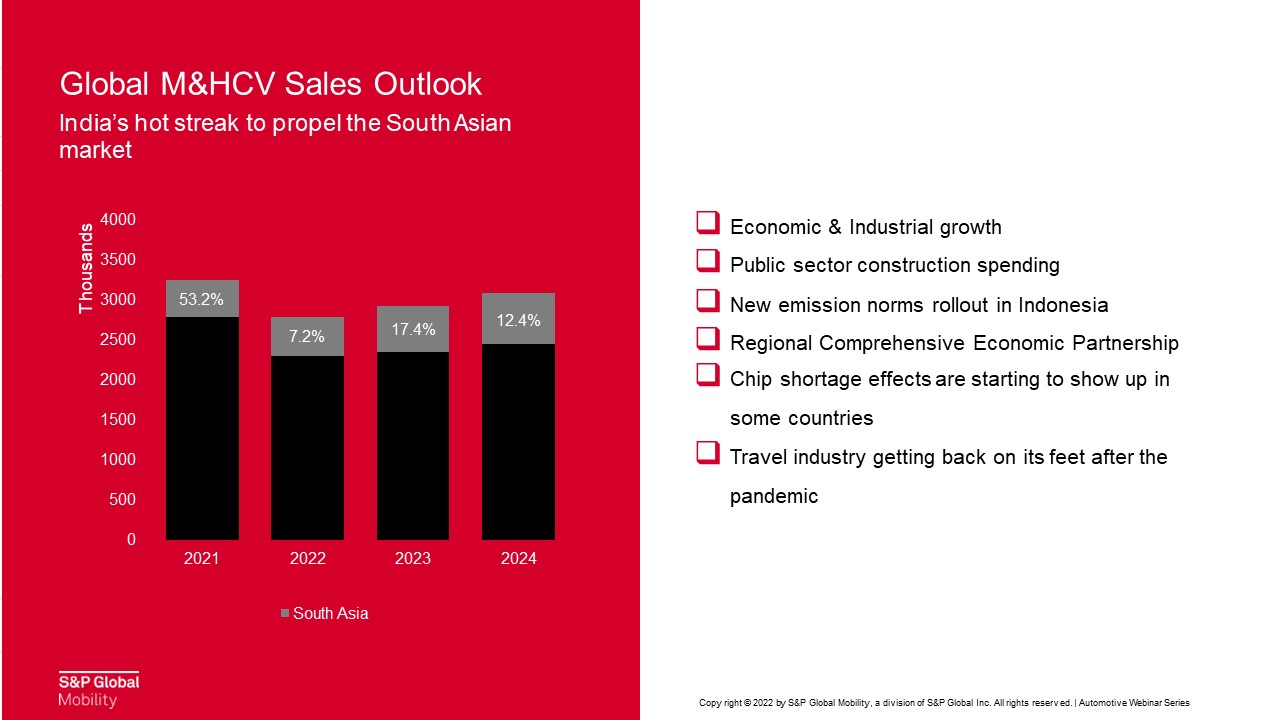
Highlighting rising affinity for technologies like telematics, Shelar mentioned, “A shift from transport to logistics model is taking place.” He drew attention to the TCO of an electric vehicle (despite high acquisition cost) being lower in comparison to the running cost of a diesel and natural gas vehicle over five years. “Fuel cost in diesel and natural gas vehicles is about 55 to 60 percent whereas, in case of the electrical vehicle, it is 14 percent,” quipped Shelar. Underlining the government’s pledge to be net zero by 2030 through measures like 500 gigawatts of non-fossil fuel electricity generation and an increase in natural gas production among others, he said, “Electric vehicle technology is relevant event though issues like high initial acquisition price and charging time will take some time to resolve.”
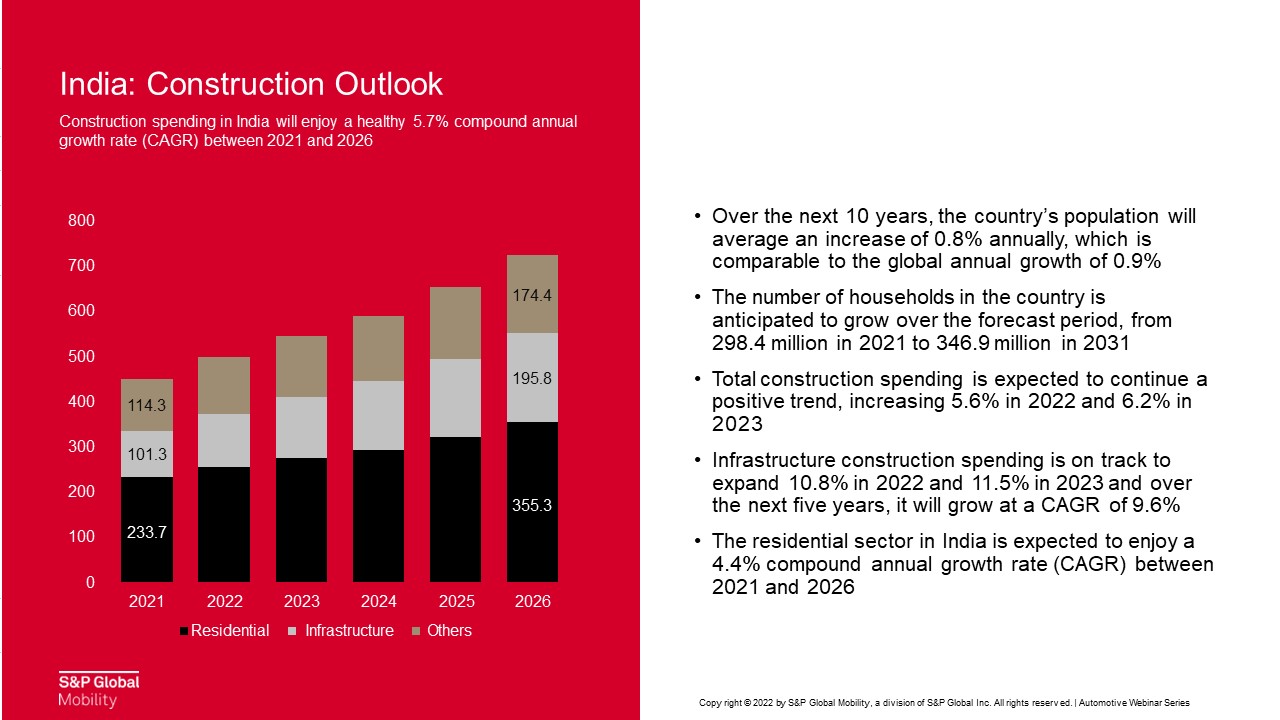
Drawing attention to key drivers like the FAME policy, stringent emission norms, higher compliance cost, and new business models against challenges like the high initial acquisition cost of EVs, range anxiety, developing charging infrastructure, and battery performance, Shelar said that fuel cell is the long-term technology for M&HCVs. In his presentation, Paritosh Gupta, Analyst – M&HCV Forecasting, S&P Global Mobility, averred that the global M&HCV industry headwinds include the Russia-Ukraine conflict and supply chain constraints. “The forecast for 2022 alone is a drop of about 150,000 units, which is 4.4 percent of the entire market size,” he added. Informing that major degradation has come from Europe and North America, Gupta mentioned, “In 2022, the European and North American markets have dropped by 86,000 units and 38,000 units respectively. A lot of volume from central and eastern Europe has been lost and the possibility of sales moving up smartly in the next three years is less.”

Stating that South Asia, Middle East, and African regions are showing optimism, he explained, “The South Asian market is primarily driven by the performance of the Indian market over the last two quarters. The Chinese market was the only one in 2020 among the key regional M&HCV markets to report positive growth numbers.” Underlining China’s slowing economic growth due to factors like a highly stringent pandemic policy, ithdrawal of pandemic state support, and a shift from road to rail for bulk materials, Gupta expressed, “A 26 percent drop in 2022 and another 1.6 percent drop in 2023 is expected before recovery starts in 2024,” Announcing that the North American forecast is largely positive even though the potential for growth remains limited, he stressed on rising inflation, increasing interest rates, and manufacturing constraints. “We expect fleets to add capacity with the supply chain situation improving in 2023,” quipped Gupta.
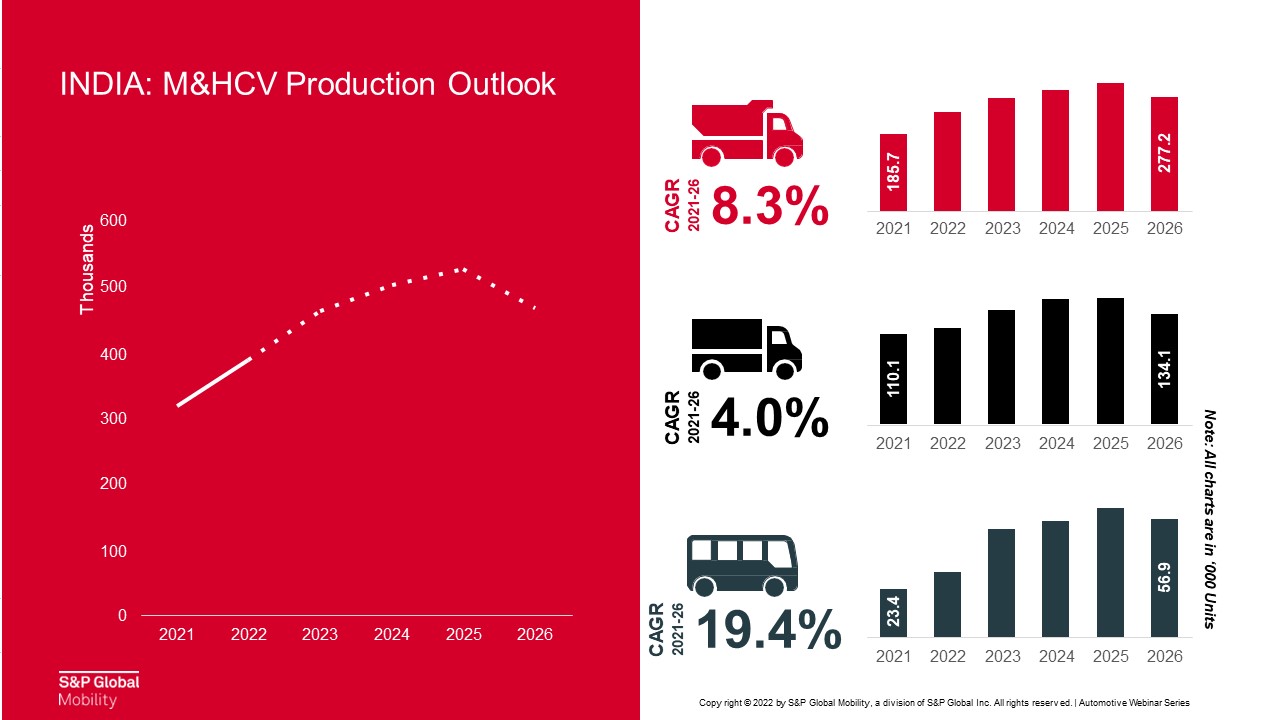
Describing that the Western European market is estimated to remain flattish while the Central and Eastern European market is estimated to drop by 28 percent, Gupta pointed at the Russia-Ukraine conflict and supply constraints as the reasons. Western European markets are facing challenges like raw material and truck price increase whereas the Eastern-Central European markets are facing sanctions, stoppage of production by foreign OEMs, and the possibility of Chinese OEMs setting up shops in Russia, he said. Stressing that South Asia was the fastest growing market in 2021, led by India outgrew expectations, Gupta revealed that India accounts for around 60 percent of the M&HCV sales in the region. “In 2022, the South Asian M&HCV market should grow by 7.2 percent and the figures for 2023 and 2024 will be healthy double-digit ones,” he explained. Of the opinion that the factors driving the South Asian M&HCV market include economic and industrial growth, public sector construction spending, the roll-out of new emission norms in Indonesia, comprehensive economic partnership across the region, and an increase in travel, Gupta quipped, “Struggling with chip and other raw material shortage, the Japanese and South Korean markets are expected to be largely flat.”
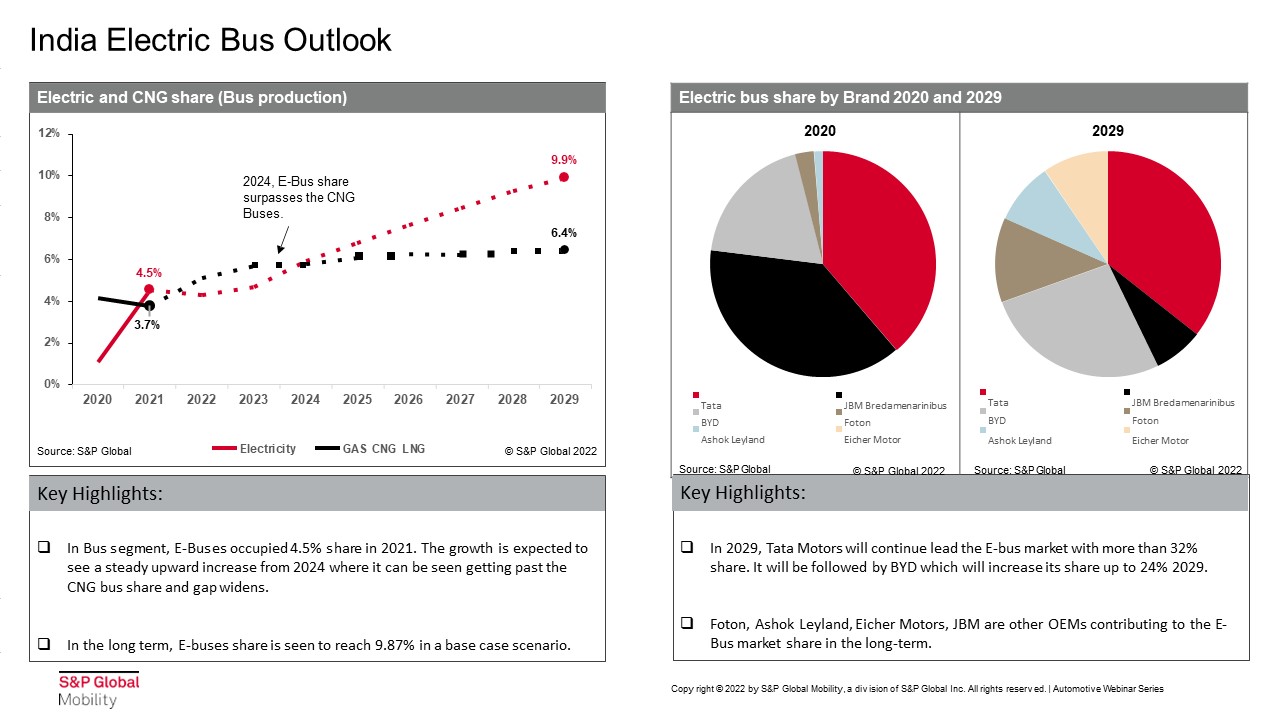
Highlighting rising inflation, high import bills, and weaker global demand as Indian M&HCV headwinds, Gupta mentioned, “The outlook is largely positive though not to the extent it was two years back.” “The construction industry spending will command a CAGR of 10.1 percent between 2021 and 2026 and provide a solid impetus for M&HCV growth,” he added. Stating that while the infrastructure segment’s growth will fuel the growth of heavy-duty trucks, Gupta quipped, “The upward growth trajectory of the e-commerce industry towards becoming the second largest by 2034 is indicative of the growth in demand for medium-duty trucks.” Explaining that the rise of e-commerce and medium-duty trucks over the last five years is a parallel journey, he averred, “Expected to grow at a CAGR of 21 percent over the next 8 years as per IBEF, the e-commerce industry will give a huge boost to medium-duty trucks in India in the future.” “The government has also introduced several policies which are aimed at providing growth to the automotive industry,” he added.

Pointing at the scrappage policy, production-linked incentive scheme, and electrification initiatives, Gupta said, “We see a big tranche of about 50,000 e-buses to come over the next five years” Of the opinion that the monopoly of Tata Motors and Ashok Leyland will continue over the next decade, he averred, “Expect the industry volumes to peak in 2025. Tata Motors will almost touch 200,000 units in 2026.” “In terms of segmental sales, heavy trucks are the largest shareholder in the (M&HCV) market and are expected to clock 275,000 units in 2026 growing at a rate of 7.8 percent,” quipped Gupta. Explaining that MCVs rise will be linked to the rise of e-commerce industry growth and will clock almost 97,000 units by 2026 at a rate of 7.3 percent, Gupta said, “Worst hit by the pandemic, the M&HCV bus segment is expected to pick up in 2022 and reach 54,000 units by 2026.” “The production trend of M&HCVs will be similar to the demand trend in the market. Some buffer will be provided by exports as part of the PLI scheme,” he added.
On the topic of M&HCV propulsion trends, Manat Bali, Research Analyst, S&P Global Mobility, mentioned, “Electrification is happening at a much higher pace in buses than trucks. About 99 percent of the M&HCV truck market is currently belonging to IC engines comprising gas and diesel fuels. About 75 percent of the bus market is driven by IC engines running on gas and diesel. With electrification initiatives, the market share of e-buses is expected to reach 30 percent in the long run. It will reach about 9.8 percent by 2029. Natural gas market share will increase up to 12 percent by 2029, triggered mainly by increased availability. It will achieve better traction in medium-duty trucks rather than in heavy-duty ones.”
Of the opinion that diesel fuel will see a de-growth of about 9 percent by 2029 in the Indian CV market at the cost of gas and electrification, Bali averred, “The only electrification taking place in the M&HCV segments is in the bus space as of now. In the long-run, the CNG market share will continue to trail that of the e-bus market share.” “Tata Motors will continue to lead the e-bus market followed by BYD and others in the long run,” he added. About the global e-bus market in the M&HCV category, Bali mentioned, “China is a highly ature and dominant player in e-buses. Other regions are moving up with South Asia having a CAGR growth of 46 percent from 2020 to 2029. India will dominate the e-bus market in South Asia by contributing to over 90 percent of the share.” “The factors driving electrification in India include FAME, state schemes, COP26 target, PLI schemes, and taxation,” he added. “The hindrances in electrification include regulatory drawbacks, infrastructure issues, cost concerns, and end-user dilemmas,” Bali concluded.
Recorded webinar session Available on Demand, please click the link below to watch the session:
https://event.on24.com/wcc/r/3673674/7F886C4E4B36403DD80C623612674EFF?partnerref=motoringtrends
Force Motors' Domestic Sales Grows 59% In November
- By MT Bureau
- December 01, 2025
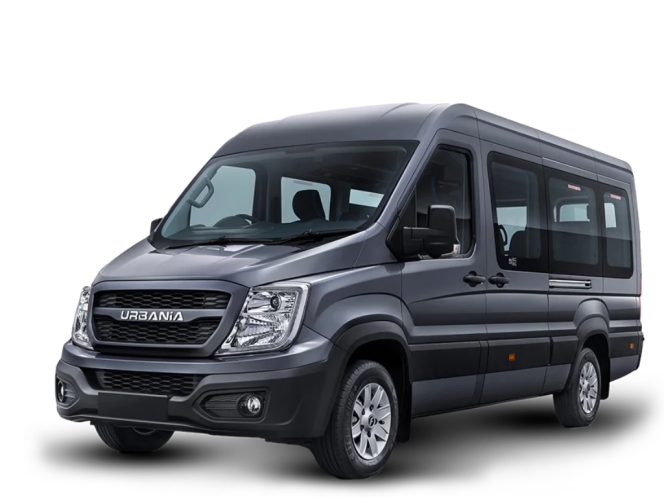
Force Motors, India's largest van maker, reported a strong 59 percent YoY growth in domestic wholesale for November 2025, as compared to last year.
The company attributed the surge in sales to the rapid scaling of the Urbania and Trax platforms, both of which now contribute a higher share to overall volumes. Trax, in particular, has benefited from the recent GST rationalisation on rural mobility categories, which has improved affordability and accelerated replacement demand across rural and semi-urban markets.
Traveller, the company’s people-mobility platform, continues to anchor volumes with consistency and year-to-date growth, while the Monobus recorded sustained traction through increased institutional and state transport requirements.
For April to November 2025, Force Motors registered a 23 percent year-to-date growth, driven by adoption of new-generation platforms and improved demand across core customer segments.
Prasan Firodia, Managing Director, Force Motors, said, “We are pleased with the sustainable growth in our domestic sales, which reflects the strong customer confidence in our range of reliable and robust vehicles. While domestic wholesales grew by 59 percent in November 2025, overall volumes were moderated by expected fluctuations in export dispatches, which typically vary based on shipment cycles across international markets. Despite this, total wholesales still registered a strong 53 percent YoY increase, underscoring the company’s resilient growth trajectory”.
The company continues to see rising demand across key sectors including rural transportation, staff carriers and goods movement. Force Motors remains committed to innovation and customer satisfaction, ensuring performance and low total cost of ownership.
Montra Electric Launches E-27 Tractor At INR 1.07 Million
- By MT Bureau
- November 27, 2025
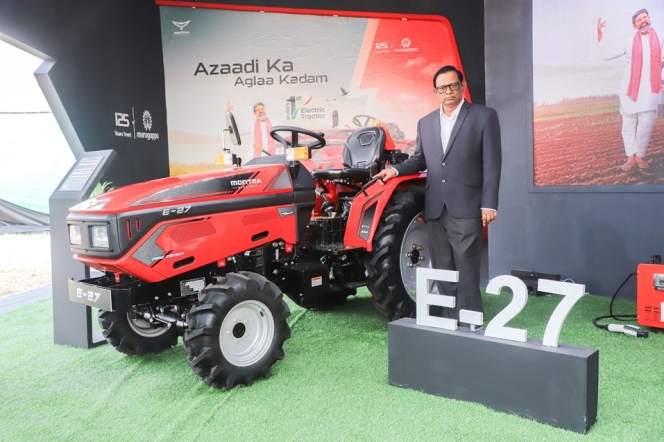
Montra Electric, the clean mobility brand of the Murugappa Group, has marked its entry into the northern markets with the Montra Electric E-27 tractor at the EIMA Agrimach India 2025 exhibition.
The E-27 is stated to be India’s first ARAI-certified electric tractor and delivers 27 HP equivalent power and 90 Nm torque through a high-efficiency PMSM motor, enabling performance in plowing, tilling, spraying and haulage. The e-tractor comes with 2WD and 4WD drivetrain options.
The E-27 is now available for purchase in 17 dealerships across 10 states, with prices starting from INR 1.07 million (ex-showroom).
Its 22.37 kWh LFP prismatic-cell battery pack offers a runtime of approximately 4.5 hours with a charging time of 2.15 hours. The E-27 is ARAI certified, confirming its compliance with national standards for safety, reliability and performance.
The tractor features an 8F + 2R side-shift transmission, a dual-speed PTO (540 and 1000 rpm) and a 720 kg hydraulic lifting capacity. Economically, the E-27 reduces operating costs by up to 70 percent due to no diesel consumption and lower maintenance requirements, resulting in lifetime savings nearing INR one million compared to conventional diesel models. The quiet operation and reduced vibration improve operator comfort.
Harish Prasad, CEO, Montra Electric Tractors, said, “The expansion into the northern markets with our Montra Electric E-27 tractor is a pivotal milestone for us and a major step in India’s clean-mobility and agricultural transformation. Agriculture is the largest consumer of tractors, which makes electrification essential for achieving meaningful sustainability at scale. The E-27 reflects our broader vision of building clean, accessible, and future-ready mobility solutions. By bringing zero-emission technology to India’s farmlands, we are aligning our mission of sustainable mobility with the nation’s long-term environmental and economic priorities. Farmers can now embrace cutting-edge technology without compromising productivity, while substantially reducing their total cost of ownership.”
Piaggio Launches Ape Xtra Bada 700 And Ape Xtra 600 Diesel Cargo Three-Wheelers
- By MT Bureau
- November 20, 2025
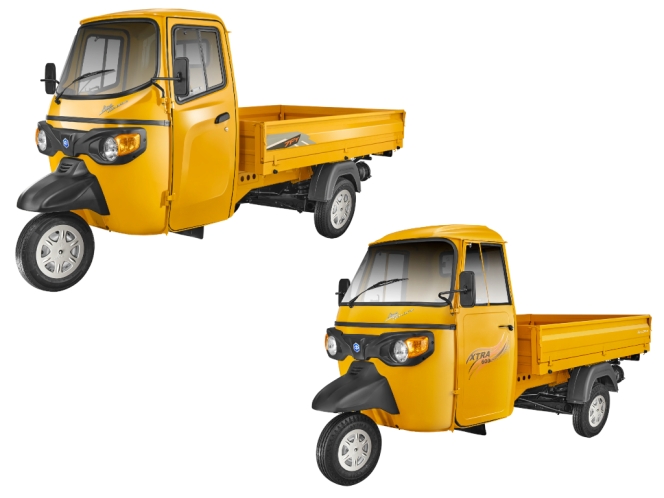
Piaggio Vehicles, a subsidiary of the Piaggio Group, has launched two new diesel cargo three-wheelers in India – the Ape Xtra Bada 700 and the Ape Xtra 600 priced at INR 345,000 and INR 288,000 (ex-showroom Maharashtra), respectively.
The new three-wheelers are designed to strengthen the company’s position in the last-mile cargo sector and compete with entry-level four-wheel cargo small commercial vehicles (SCVs).
The Ape Xtra Bada 700 introduces features intended to set new industry standards in the three-wheeler cargo category. It features the company's 700 DI diesel engine, providing pulling power and enhanced torque. The vehicle debuts India's first 7 feet cargo deck, allowing for larger and longer loads. It offers a segment-best 750 kg payload capacity, the largest in any three-wheeler cargo vehicle. Other features include a new platform, a digital cluster, 12-inch radial tyres, a new cab and an industry warranty of five years.
The new Ape Xtra 600 features Piaggio's newly developed 600 DI diesel engine, offering improved mileage, better gradeability, and enhanced load-carrying performance. The vehicle is positioned as a reliable and efficient option at an accessible price point.
Diego Graffi, Chairman & Managing Director, Piaggio Vehicles, said, “At Piaggio India, we have always believed in pushing the boundaries of innovation in the last-mile mobility segment. The Ape Xtra Bada 700 is a landmark product that disrupts the cargo 3-wheeler category with industry-first features in engine capacity, deck size and payload. It is designed to empower customers with more productivity and superior earnings. Alongside, the Ape Xtra 600 continues our commitment to delivering efficient, high-value solutions. With these new diesel cargo products, we strengthen our Ape legacy and reiterate our focus on customer-centric engineering.”
Amit Sagar, Executive Vice-President, CV Domestic Business & Retail Finance, Piaggio Vehicles, added, “Cargo mobility demands are changing rapidly, with customers expecting higher power, higher payload, better comfort, and stronger performance. The Ape Xtra Bada 700 addresses all these needs with a fresh, powerful new platform and several industry-firsts that directly enhance profitability for customers. It provides the most efficient, economical, and affordable option for a Cargo 3W and provides a compelling alternate to the four-wheeler cargo vehicles with an advantageous Opeco and TCO. The Ape Xtra 600 also brings improved capabilities to our strong diesel cargo portfolio. We are confident that these products will further strengthen our leadership in the cargo three-wheeler market.”
IVECO S-Way CNG Truck Achieves 1,000km Range On Single Refill
- By MT Bureau
- November 20, 2025
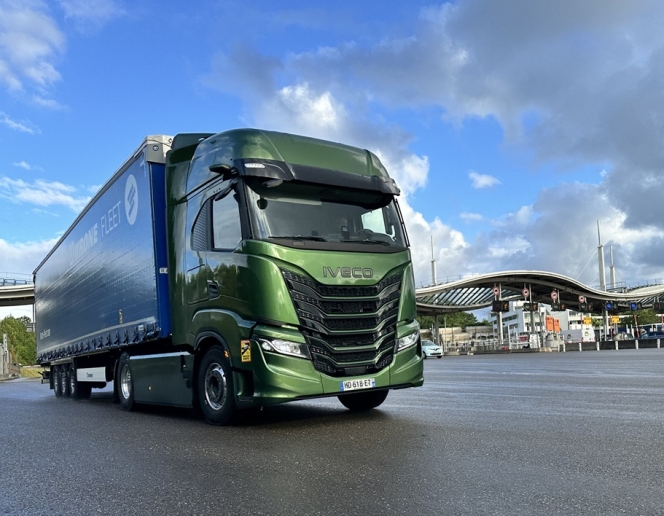
IVECO, a manufacturer in alternative propulsion, has demonstrated the endurance of its gas-powered heavy vehicles with the IVECO S-Way CNG truck travelling over 1,000 kilometres on one refill of compressed natural gas (CNG).
The test was carried out under real-world conditions by French journalists Fabien Calvet and Loic Fieux, driving between the Belgian and Spanish borders. The tractor unit towed a loaded curtain-sided semi-trailer with a gross combination weight of 30 tonnes, confirming the S-Way CNG’s efficiency and viability for daily operations. The result showed an average consumption of below 21 kg / 100 km over the distance, combined with quick refuelling.
The truck's gas engine is said to have delivered smooth, responsive and quiet performance, with handling comparable to a diesel model. The journalists noted the vehicle's high-performance engine brake and intarder hydraulic retarder offered strong braking, while the full air suspension enhanced driving comfort.
The model tested uses the xCursor 13 engine by FPT Industrial, producing 500 hp and 2,200 Nm of torque. This engine is designed to meet future Euro VII emissions standards and is paired with a second-generation ZF TraXon 12-speed automated gearbox.
The vehicle was equipped with new 620-litre tanks, providing a total capacity of 1,240 litres equivalent to at least 190 kg of CNG. This capacity represents an 18 percent increase over the previous generation.
IVECO utilised multiple systems to maximise fuel efficiency:
- Predictive GPS systems worked to recover kinetic energy on downhill sections and adjust engine speed ahead of climbs.
- Intelligent energy management features, including a controlled alternator and a dis-engageable air compressor, ensure energy is only consumed when necessary.
- Aerodynamic improvements such as deflectors, side fairings and mirror-cams help to reduce drag.
The gas-powered trucks offer a transport solution that is both sustainable and cost-effective, supported by an established European refuelling network. Operators can utilise the approximately 4,300 bioLNG and 800 BioCNG stations currently in operation.
When running on biomethane, which is produced from organic waste, the trucks can reduce carbon dioxide (CO2) emissions by an average of 95 percent, alongside lower fine particle and nitrogen oxide emissions compared to diesel. The European gas refuelling network is set to expand further, with 50 new stations scheduled to open in 2026.






Comments (0)
ADD COMMENT